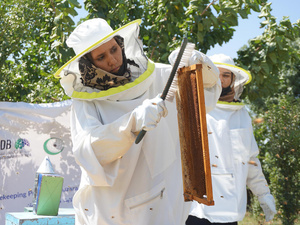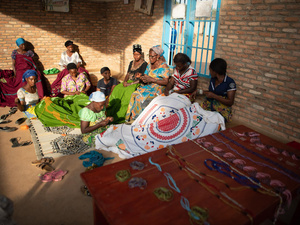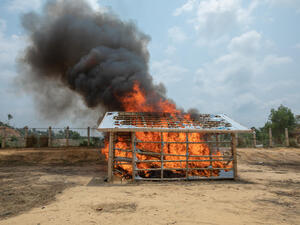Thousands return to Mogadishu while more people flee Somalia
Thousands return to Mogadishu while more people flee Somalia
Some 60,000 people have returned to Mogadishu since the start of 2009. The majority are returning from settlements for internally displaced people in the Lower and Middle Shabelle regions in south-central Somalia, and Hiraan, Galgaduud and Mudug regions in central Somalia. They are returning mainly to the districts of Yaaqshiid, Wardhiigleey, Heliwaa, and Hawl Wadaag in north-east Mogadishu.
UNHCR has also reports of 2,200 returnees from Kenya, 300 from Yemen and 20 from Ethiopia, as well as a mixed group of some 900 refugees and forced returnees from Saudi Arabia.
Although Mogadishu was relatively peaceful in March, the fighting that erupted at the end of that month between an armed opposition group and government forces displaced some 1,200 people.
Despite the fact that returns are a positive sign and that sustainable return of refugees and displaced people is the preferred solution, at the moment UNHCR is not encouraging returns to Mogadishu because of the volatile security situation and lack of basic services. The returnees are facing multiple problems, including the lack of adequate shelter. Many houses in the neighbourhoods of return were destroyed in the heavy fighting that took place in Mogadishu in the last two years.
UNHCR is leading an inter-agency assessment of the situation in Mogadishu, which will guide the assistance and protection policy of the humanitarian community with regards to the returnee communities.
UNHCR is also re-establishing its presence in Mogadishu, as all international humanitarian workers were evacuated after the security deteriorated in July 2008 following killings and kidnapping of UN officials, including the abduction of the UNHCR head of office.
On 8 April, UNHCR's representative to Somalia visited Mogadishu together with other humanitarian agencies. They discussed with the new Minister for Humanitarian Affairs the next steps to take in support of returnees and the displaced.
Despite the positive sign of returns to Mogadishu, the insecurity in some regions of the country, combined with drought and the lack of livelihoods among rural and urban people, continues to push thousands of Somalis to flee to neighbouring countries.
More than 24,000 Somali refugees fled to Kenya since January and some 3,000 entered Ethiopia, while another 10,000 people left their homes during the same period because of the acute drought ravaging many parts of the country. Some 8,000 of the drought-affected population were displaced in Kismaayo and Badhaade districts in the Lower Juba region, while over 2,000 have moved from rural to urban areas in Galgaduud in the central Somalia. The biggest problem is the heavy loss of livestock suffered by the predominantly pastoralist communities in the worst drought in 30-years.
UNHCR assists more than 460,000 Somali refugees in nearby countries, including Kenya (277,000), Yemen (126,000), Ethiopia (36,000), Djibouti (8,000), and Uganda (7,000) in addition to coordinating protection and shelter activities for the 1.3 million displaced in Somalia.









